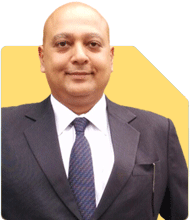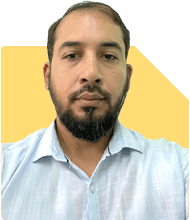Abhishek Shah | Answer |Ask -Follow
HR Expert - Answered on Aug 10, 2023

Hi Guru, My son has completed his MA in Economics with Statistics and Mathematics and without a job. Can you suggest the possible avenues or companies hiring persons with his qualifications
I'd be glad to help. With your son's background in Economics, Statistics, and Mathematics, he possesses a strong skill set that can be valuable in various industries. Here are some potential avenues and types of companies that often hire individuals with such qualifications:
Financial Institutions: Banks, investment firms, insurance companies, and other financial institutions frequently hire individuals with strong analytical and quantitative skills to work in roles such as data analysis, risk assessment, financial modeling, and market research.
Consulting Firms: Management, economic, and data consulting firms seek candidates with expertise in Economics and Statistics to provide insights into market trends, consumer behavior, and strategic decision-making for clients.
Government Agencies: Many government agencies hire economists and statisticians to analyze economic trends, develop policies, and conduct research on various socio-economic issues.
Technology Companies: Tech companies often require professionals with strong analytical skills to work in areas like data science, machine learning, and business analytics.
Market Research Firms: These firms need individuals who can analyze market data, consumer behavior, and industry trends to provide insights to their clients.
Academia and Research Institutes: If your son is inclined towards research and academia, he might consider pursuing a PhD and entering the world of academic research and teaching.
Multinational Corporations: Large corporations in various sectors hire economists and statisticians to analyze data, forecast market trends, and inform business strategies.
Healthcare Industry: Healthcare organizations may require individuals with strong analytical skills to analyze patient data, healthcare costs, and outcomes for research and policy-making purposes.
Non-profit Organizations: NGOs and non-profit organizations often need economists and statisticians to analyze data related to social issues and to inform policy recommendations.
Energy and Environmental Companies: These industries require professionals to assess the economic impact of energy policies, analyze environmental data, and support sustainable business practices.
To increase his chances of landing a suitable job, your son should consider networking, attending job fairs, and utilizing online job platforms. Tailoring his resume and cover letter to each specific job application is also crucial. He might also want to consider gaining relevant certifications or skills in data analysis tools like Python, R, or statistical software packages.
The job market is competitive, but with his qualifications, he is well-positioned to find a rewarding and intellectually stimulating role in a variety of industries.
Best regards,
Abhishek Shah
You may like to see similar questions and answers below
Neeraj Batra | Answer |Ask -Follow
CA, CS, Commerce Expert - Answered on Aug 10, 2023
Sushil Sukhwani | Answer |Ask -Follow
Study Abroad Expert - Answered on Jun 12, 2024
Aasif Ahmed Khan | Answer |Ask -Follow
Tech Career Expert - Answered on Jul 30, 2024
Ravi Mittal |679 Answers |Ask -Follow
Dating, Relationships Expert - Answered on Dec 22, 2025
Ramalingam Kalirajan |10923 Answers |Ask -Follow
Mutual Funds, Financial Planning Expert - Answered on Dec 22, 2025
Ramalingam Kalirajan |10923 Answers |Ask -Follow
Mutual Funds, Financial Planning Expert - Answered on Dec 22, 2025
Ramalingam Kalirajan |10923 Answers |Ask -Follow
Mutual Funds, Financial Planning Expert - Answered on Dec 22, 2025
Ramalingam Kalirajan |10923 Answers |Ask -Follow
Mutual Funds, Financial Planning Expert - Answered on Dec 22, 2025
Ramalingam Kalirajan |10923 Answers |Ask -Follow
Mutual Funds, Financial Planning Expert - Answered on Dec 22, 2025
Ramalingam Kalirajan |10923 Answers |Ask -Follow
Mutual Funds, Financial Planning Expert - Answered on Dec 22, 2025
Ramalingam Kalirajan |10923 Answers |Ask -Follow
Mutual Funds, Financial Planning Expert - Answered on Dec 22, 2025
Ramalingam Kalirajan |10923 Answers |Ask -Follow
Mutual Funds, Financial Planning Expert - Answered on Dec 22, 2025
Ramalingam Kalirajan |10923 Answers |Ask -Follow
Mutual Funds, Financial Planning Expert - Answered on Dec 22, 2025

























